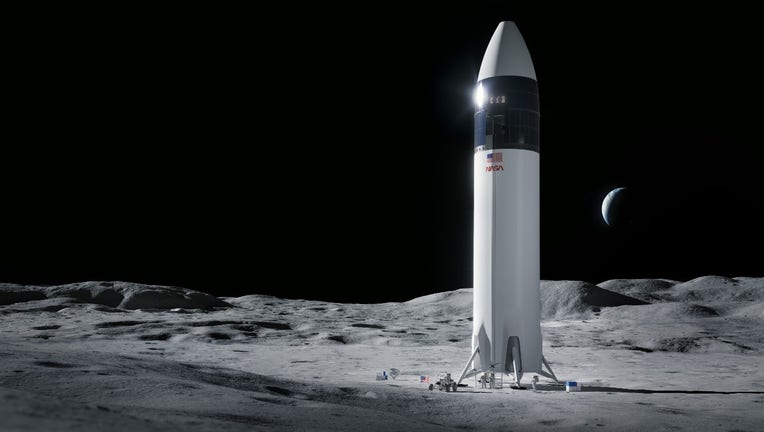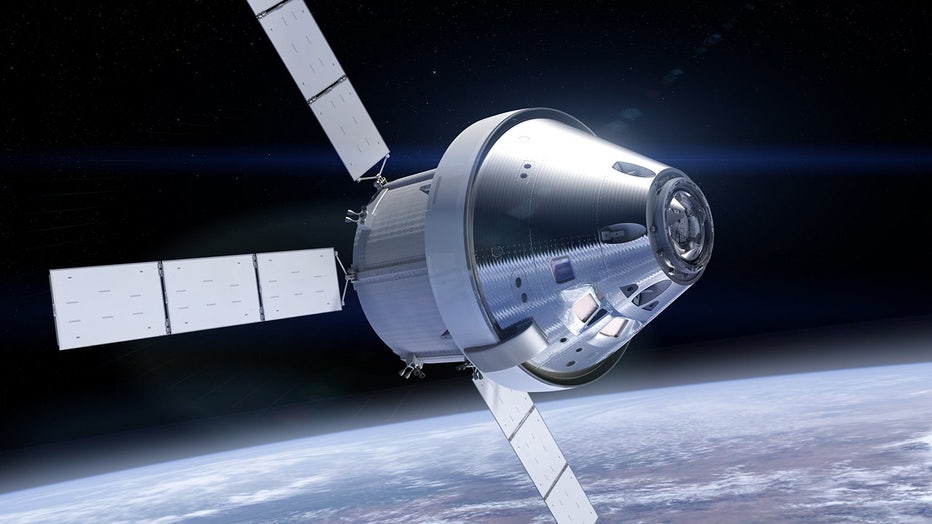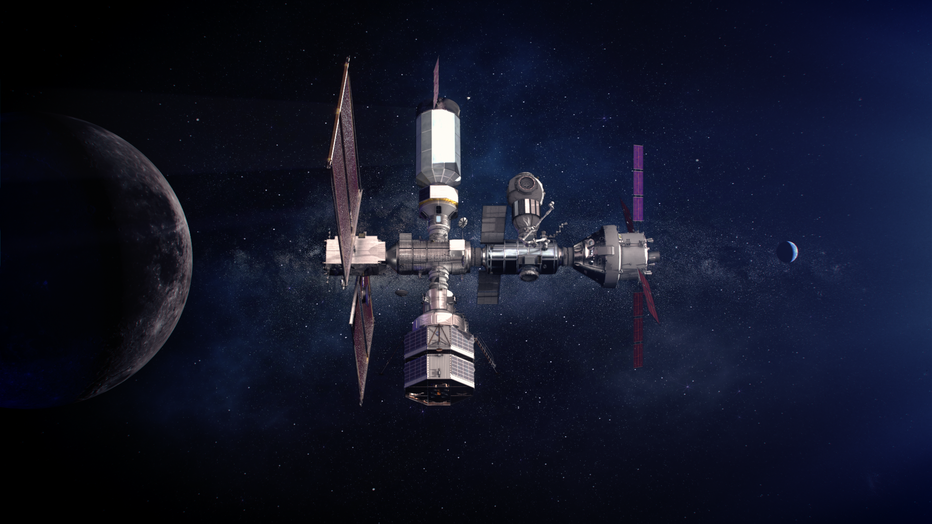SpaceX lands NASA's $2.89 billion contract to put humans on lunar surface with Starship

Illustration of SpaceX Starship human lander design that will carry NASA astronauts to the Moon's surface during the Artemis mission.Credits: SpaceX
LAKE MARY, Fla. - NASA on Friday announced a continued partnership with SpaceX in the development of the first commercial human lander that will carry the next American astronauts to the lunar surface, part of the Artemis Moon program.
The space company has been awarded a $2.89 billion contract.
NASA's Space Launch System (SLS) rocket will carry four astronauts aboard the Orion spacecraft for their multi-day journey to lunar orbit. There, two crew members will transfer to the SpaceX human landing system (HLS) for the final leg of their journey to the surface of the Moon.

The Orion spacecraft in orbit (NASA artist concept)
After approximately a week exploring the surface, they will board the lander for their short trip back to orbit where they will return to Orion and their colleagues before heading back to Earth.
SpaceX’s HLS Starship is intended to evolve to a fully reusable launch and landing system, NASA says, designed for travel to the Moon, Mars, and other destinations.
RELATED: SpaceX Crew-2 astronauts arrive at the Kennedy Space Center
The company has been running test flights of the Starship at its Boca Chica facility in Texas over the last year.

SpaceX Starship explodes
It looked as though the test flight of the SpaceX Starship SN10 went well. However, shortly after landing, the rocket exploded. One space industry analyst said it should still be considered a success.
"NASA has selected Starship to land the first astronauts on the lunar surface since the Apollo program! We are humbled to help @NASAArtemis usher in a new era of human space exploration," SpaceX tweeted Friday afternoon.
SpaceX founder and CEO Elon Musk echoed the enthusiasm, saying "NASA Rules!!"
"With this award, NASA and our partners will complete the first crewed demonstration mission to the surface of the moon in the 21st century as the agency takes a step forward for women’s equality and long-term deep space exploration," said Kathy Lueders, NASA's associate administrator for Human Explorations and Operations Mission Directorate. "This critical step puts humanity on a path to sustainable lunar exploration and keeps our eyes on missions farther into the solar system, including Mars."

Illustration of Artemis astronauts on the Moon. (Photo Credit: NASA)
RELATED: Starship SN10 a 'success' despite explosion after landing
"This is an exciting time for NASA and especially the Artemis team," said Lisa Watson-Morgan, program manager for HLS at NASA’s Marshall Space Flight Center in Huntsville, Alabama. "During the Apollo program, we proved that it is possible to do the seemingly impossible: land humans on the Moon. By taking a collaborative approach in working with industry while leveraging NASA’s proven technical expertise and capabilities, we will return American astronauts to the Moon’s surface once again, this time to explore new areas for longer periods of time."
NASA said with its Space Launch System rocket, Orion spacecraft, HLS, and the Gateway lunar outpost, NASA and its commercial and international partners are returning to the Moon for scientific discovery, economic benefits, and inspiration for a new generation.

The Gateway will be an outpost orbiting the Moon that provides vital support for a sustainable, long-term human return to the lunar surface, as well as a staging point for deep space exploration. {Credit: NASA]
To date, only 12 people, all Americans, have landed on the Moon. The last NASA astronaut to set foot on the Moon was Apollo 17 Mission Commander Gene Cernan on Dec. 14, 1972.
TRENDING: NASA shares stunning image of blue dunes on Mars
NASA is targeting November of this year for the launch of the uncrewed Artemis I mission. The first crewed flight is planned for 2023.
Watch FOX 35 News for the latest on the crewed launch.

